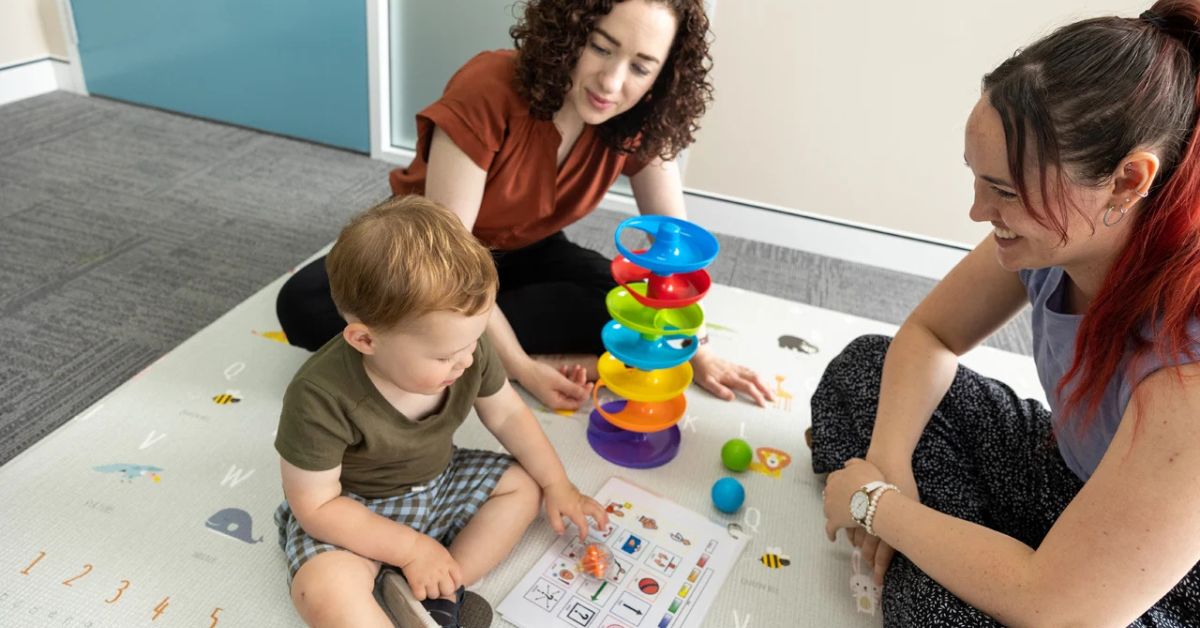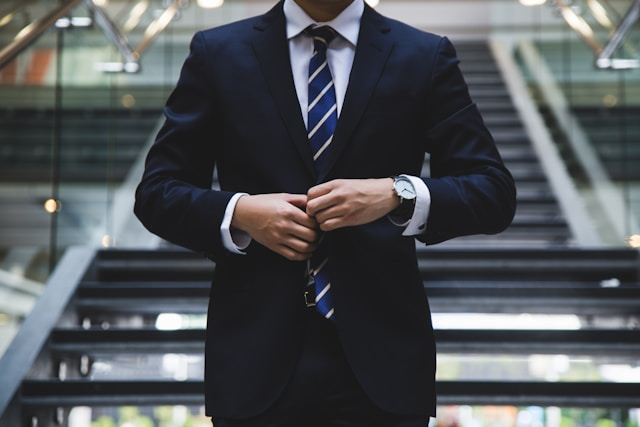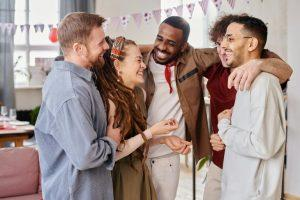LIFESTYLE
Finding the Right ASD Assessment for Your Child in Adelaide

Caring for a child’s unique developmental needs can be both challenging and rewarding. If you’re searching for a reliable child ASD assessment in Adelaide, we’re here to help. Adelaide Clinical Psychology offers comprehensive and personalised support for families navigating an Autism Spectrum Disorder (ASD) diagnosis.
In this blog, we’ll walk you through our detailed child ASD assessment process, highlight the importance of early diagnosis, and explore how understanding ASD can empower your child’s growth and future development.
What is Autism Spectrum Disorder (ASD)?
Before booking an ASD assessment, it’s important to understand the basics of Autism Spectrum Disorder and how it may affect your child.
ASD is a developmental condition that influences how individuals communicate, interact socially, and perceive the world around them. The term “spectrum” reflects the variety of traits and support needs experienced by individuals across the autism spectrum.
Key Characteristics of ASD in Children
Every child with autism is unique, but some common traits include:
- Social Communication Challenges: Difficulties understanding facial expressions, body language, or non-verbal cues, as well as challenges maintaining conversations.
- Repetitive Behaviours & Routines: Hand-flapping, rocking, or a strong preference for daily routines. Some children may exhibit intense interests in specific topics.
- Sensory Sensitivities: Over-reactions or under-reactions to sensory stimuli like sounds, lights, textures, or smells.
- Developmental Differences: Delayed speech development or alternative communication methods, alongside exceptional talents in areas like memory or pattern recognition.
These characteristics vary from child to child and may evolve over time, further underscoring the importance of individualised assessment and support.
Why Early ASD Assessment Makes a Difference
Many families ask when the best time is to get their child assessed for ASD. At Adelaide Clinical Psychology, we generally recommend starting assessments from the age of six.
Benefits of Early Diagnosis
- Effective Interventions: Early identification allows for personalised therapy and interventions during key developmental stages, aiding communication and social skills.
- Tailored Strategies: Helps parents and educators create realistic goals and strategies suited to the child’s strengths.
- Improved Quality of Life: Early support fosters confidence and skills that empower the child to thrive socially, academically, and emotionally.
An early ASD assessment also identifies any co-occurring challenges, such as ADHD or learning disorders like Dyslexia or Dysgraphia, ensuring a comprehensive approach to your child’s development.
Understanding Our ASD Assessment Process
Our experienced team at Adelaide Clinical Psychology has guided many families through the ASD assessment process. Here’s a breakdown of what to expect when you work with us.
Step 1: The Intake Call
Your experience starts with one of our dedicated Client Concierges, such as Candy Elliot. With expertise in psychotherapy, our team listens to your concerns, provides an overview of what to expect, and ensures that the assessment process fits your child’s needs.
Step 2: Online Clinical Interview with Parents
Parents know their children best. That’s why we begin with a detailed online interview with one of our psychologists. This interview explores your child’s developmental history, family background, behavioural patterns, academic performance, and any existing reports from schools, doctors, or specialists.
This initial dialogue helps us build a complete understanding of your child’s strengths and challenges, laying the foundation for a personalised approach to the assessment process.
Step 3: Psychometric and Child Testing
Over two structured sessions at our clinic, your child will participate in comprehensive, gold-standard assessments with our skilled psychologists. These assessments measure three core areas:
- Cognitive Abilities: Focuses on reasoning, verbal comprehension, memory, and processing speed.
- Executive Functions: Evaluates skills like impulse control, planning, and adaptability.
- Social & Emotional Functioning: Uses questionnaires and observation to understand emotional patterns and social interactions.
Additionally, teachers and parents may submit screening tools to provide further insight into behaviours in various environments.
Step 4: Analysis & Comprehensive Report
Post-assessment, our psychologists perform an in-depth data analysis to identify patterns and behaviours linked to ASD. A personalised, thorough report outlines these findings, summarising test results, behaviour observations, and actionable recommendations.
Our recommendations often include educational accommodations, therapy options, and lifestyle adaptations designed to suit the child’s specific needs, ensuring a clear roadmap for future growth.
Step 5: Feedback Session
Finally, we connect with you through an online feedback session, giving you the opportunity to discuss the assessment results and address any questions. We explain the diagnosis thoroughly and provide tailored strategies, empowering families to move forward with confidence. Your detailed report serves as a valuable resource for educators, therapists, and healthcare providers.
Supporting Your Family Through the Journey
Navigating an ASD diagnosis can feel overwhelming, but at Adelaide Clinical Psychology, we’re here to support you every step of the way. With compassion and expertise, we aim to provide every family with practical, personalised tools to help their child succeed in all aspects of life.
Whether your child is facing challenges in the classroom, struggling with social interactions, or displaying unique learning styles, our assessment process is designed to bring clarity, confidence, and constructive solutions.
Book Your Child’s Assessment Today
At Adelaide Clinical Psychology, our priority is your child’s well-being. By understanding their unique needs, we provide a foundation to help them thrive. If you’re considering an ASD assessment in Adelaide, we’re here to guide you.
Reach out to us today to take the first step toward clarity and compassionate care.
LIFESTYLE
How Do You Extend the Life of an Aging Mattress?

No matter how high-quality your mattress is, after a specific timeframe, it starts to wear down slowly. How long a mattress lasts mainly depends on the type and material it’s made of. For example, foam mattresses usually last around 7-10 years, while innerspring mattresses may last 5-8 years or more. However, small adjustments in your habits and environment can help you make it last longer.
Here are some effective tips to help you enhance the longevity and durability of your mattress.
Add an Extra Layer of Comfort
When a mattress starts feeling uneven or slightly uncomfortable, adding an extra layer can make a noticeable difference. A mattress topper adds cushioning and reduces pressure on the old surface underneath, distributing your weight more evenly. It also acts like a shield and protects the mattress from direct wear, stains, and moisture, which results in slowing down the aging of your mattress.
Rotate Your Mattress Regularly
Most people stay in the same position on their bed every night, which slowly affects the foam or springs under that specific spot. Rotating your mattress helps fix this imbalance by shifting your sleeping area and allowing other parts of the mattress to carry your weight. It also reduces early sagging and keeps the surface firm.
You don’t need to follow a complicated schedule. A simple rotation every three to four months is enough for most mattresses.
Keep Your Mattress Clean
Aging mattresses often lose comfort not only because of wear but also because dust, sweat, and bacteria build up inside the layers. It affects freshness and can affect your sleep quality. Cleaning your mattress from time to time helps slow this process. You can vacuum the surface to remove dust and use mild cleaning sprays to remove light stains. Always keep the mattress dry to prevent mold and unwanted smells.
Use Proper Support Underneath
Without proper support, even a new mattress can sag early. So, a solid platform or a strong box spring can help distribute your weight evenly and prevent the mattress from sinking in the middle. If your bed frame has slats, make sure they are not too far apart and are strong enough to handle your weight. It will help reduce long-term damage, especially for older mattresses that are already losing some of their structure.
Maintain Good Airflow Around Your Bed
Moisture is one of the biggest enemies of any mattress. When air cannot move freely around your bed, humidity collects inside the mattress and slowly affects its layers. Allowing good airflow is a simple but powerful way to protect an aging mattress. Try not to place the bed directly against the wall, and make sure there is space under the frame for air circulation. You can also use a fan or dehumidifier to keep your mattress dry and fresh.
Protect It From Spills and Sweat
Liquids can weaken the internal layers of a mattress and speed up its aging. Using a washable mattress cover protects your mattress from direct contact with moisture. It also keeps stains from settling into the material. The best thing is that it is much easier to wash than to clean the mattress itself.
Avoid Sitting in the Same Spot
Many people sit on the edge of the bed when tying their shoes, using their phone, or getting ready. This puts more pressure on one small area, which increases the chance of sagging. An aging mattress is already losing its natural strength, so repeated pressure in one place can break down the material faster. Therefore, it’s better to sit on different areas of the bed or use a chair for daily tasks.
Store It Properly When Not in Use
Older mattresses need extra care because they are already sensitive to pressure and moisture. Store the mattress flat instead of standing it on its side, because vertical storage can cause bending and uneven pressure. Use a breathable cover so air can pass through while still protecting it from dust. Avoid plastic wrapping because it traps moisture. Reliable stores, like Rangooli, also provide user manuals to help you understand how to clean and store a mattress.
A Final Word
By following all the aforementioned tips, you can easily add to the overall look and lifespan of your mattress. It not only helps you cut unnecessary replacement costs, but also protects you from health issues of using an old, worn-out mattress.
LIFESTYLE
How Moving to Chicago Transforms Your Social Life in Surprising Ways

City life often promises new energy, but Chicago actually delivers. The people, the pace, and the possibilities reshape your days in ways you don’t expect. From the first week, you notice how neighbors interact, how strangers chat in line, and how often you’re invited somewhere. That’s what makes moving to Chicago so powerful, it doesn’t just change your location; it starts to enhance your daily life in real and exciting ways.
Big City, Bigger Conversations
At first, the city may seem too big for connection. But the opposite is true. You’ll find conversations in line at Trader Joe’s, at dog parks, and even during your morning commute. People here enjoy sharing recommendations and stories, especially with someone new to town.
Next, locals love talking about their favorite restaurants, sports teams, and neighborhoods. This opens the door to natural conversation. Without realizing it, you build relationships across grocery aisles and gym lockers.
Even introverts find their rhythm here. Chicago offers plenty of ways to meet people without forced interactions. Some of the easiest entry points include:
- Joining a casual intramural sports league
- Taking a local art or cooking class
- Becoming a regular at a neighborhood coffee shop
- Volunteering at weekend events or cleanup drives
Each setting brings small talk that often leads to lasting friendships. You don’t have to try hard, the city keeps offering chances to connect.

Alt: People talking
Caption: After moving to Chicago, you will have a lot of conversations with many people
Neighborhood Vibes That Feel Like Mini-Cities
Chicago’s layout helps with connection. Every neighborhood feels like its own little world, complete with favorite diners, local barbershops, and weekend street corners filled with music.
For example, Wicker Park gives off a creative, artsy feel. Lakeview leans toward young professionals and families. Meanwhile, Hyde Park blends historic charm with university buzz. As you settle in, you realize that moving to Chicago means more than relocating—it means choosing a new social setting that shapes your routine.
These neighborhoods don’t isolate you; they ground you. They create the foundation for friendship. They bring you face-to-face with people you’ll recognize at farmer’s markets or community yoga.
Bonding Through Shared Experiences
Chicago throws some of the most unexpected festivals you’ll ever attend. Whether it’s Taste of Chicago, the Air and Water Show, or a tiny taco fest in Pilsen, each event brings people together.
You won’t need to force interaction. Standing in line for food or dancing to live music often starts conversations. The relaxed setting makes it easy to connect without pressure.
Even when you go alone, you rarely feel lonely. People tend to talk, ask questions, or invite you to nearby events. These experiences help create a calendar full of fun, and new faces.
Career Connections Come Naturally
Chicago isn’t just social on the weekends. The workweek brings its own surprises. You’ll meet potential collaborators on public transit, in coworking spaces, or during casual coffee breaks.
Some professionals even find new roles through personal connections rather than job boards. That’s part of what makes the city feel alive. Opportunities often start with small talk, not interviews.
Unlike other major cities, Chicago professionals often chat openly at networking events or company mixers. It’s not stiff or transactional. Instead, people show genuine interest in what you do—and who you are.
You may attend an open mic and meet a recruiter. Or walk into a tech meet-up and walk out with a freelance gig. These aren’t rare events—they’re part of the rhythm here.

Alt: Person putting on a suit
Caption: Job opportunities will come naturally
The Real Impact of the City’s Real Estate Scene
Where you live in Chicago shapes who you meet and what you do. It affects your favorite hangouts, your closest friends, and even your hobbies. A studio near the lake might lead to morning bike rides and rooftop dinners. A walk-up in Pilsen could introduce you to pop-up art shows and late-night tamales.
The real estate market here encourages community. Apartment buildings often host group events. Back patios become shared gathering spots. Neighbors stop to talk because they actually see one another often. This sense of place becomes the start of real friendships.
If you’re thinking about location only in terms of cost, you’re missing half the story. Chicago neighborhoods define more than space—they influence social momentum. Pick your spot with that in mind.
Weekend Escapes Are Accessible From Chicago
Chicago sits in a spot that makes escaping the city both easy and exciting. Its central location means you can reach other major cities and even international borders without much planning. Highways like I-90, I-55, and I-94 connect you to places like Milwaukee, Indianapolis, and Detroit in just a few hours.
Need a bigger break? O’Hare and Midway airports offer quick flights to nearly anywhere. Whether you’re flying to Nashville for a weekend concert or heading to Mexico City, travel options stay wide open. Some locals even map out the best road trips from the US to Mexico, using Chicago as their starting point.
With strong connections in every direction, it’s easy to mix travel with social life. Group getaways become regular habits. New friends often plan weekend escapes together, sometimes by plane, sometimes by car. The trip itself strengthens bonds and creates lasting memories.
Food Meets Friendship Here
Every Chicagoan has a favorite food truck. Some swear by the tacos on 18th Street. Others chase down Korean barbecue near the Loop. No matter your taste, you’ll find a spot worth revisiting, and people worth chatting with while you wait.
Food trucks often park near parks, breweries, and college campuses. That means people eat outside, sit together, and talk. The setup encourages interaction. If you go often, you start to recognize familiar faces and join spontaneous conversations.
Don’t underestimate these moments. A shared bench and good food lead to strong social habits. And if you’re still looking, go online to find the best food trucks near you and plan your next meal with company in mind.

Alt: Food truck
Caption: Food is a big thing on the social scene in Chicago
Why Moving to Chicago Transforms More Than Your Zip Code
Moving to Chicago brings new friendships, work connections, and neighborhood pride. The change starts fast but builds over time. This city opens its doors if you say yes. Show up. Say hi. Be curious. Your social life won’t just improve—it will evolve in ways you never expected.
KW: moving to Chicago
Meta description: Discover how moving to Chicago can enrich your social world, from food trucks to festivals, making every day feel like a fresh adventure.
LIFESTYLE
How to Stay Social After Moving to a New Neighborhood

Alt tag: A smiling couple stands outside their new home, showing how to stay social after moving to a new neighborhood.
Moving to a new neighborhood can feel exciting and overwhelming at the same time. Connecting with others helps ease the transition and creates a sense of belonging. Staying social after moving to a new neighborhood takes effort, but building friendships and social routines plays a big role in feeling comfortable and happy. This process improves mental health, reduces loneliness, and opens doors to new experiences. So, taking small, intentional steps helps make the new place feel like home faster and makes meeting people more natural and enjoyable.
Understand the Benefits of Social Connection
Strong social ties improve mental and physical health; regular interactions reduce stress and boost mood. Therefore, when inviting neighbors, focus on making your guests feel comfortable. Simple gestures like offering refreshments or a warm greeting encourage conversation. Also, feeling at ease helps build trust and lasting friendships. Social connections also promote a sense of safety and belonging in new surroundings. These benefits show why investing time in relationships brings real value. Engaging with others often leads to more opportunities and support in daily life. And reaching out creates a foundation for a happier, healthier lifestyle.

Exploring the neighborhood on foot can lead to spontaneous connections and help build a strong local social life.
Alt ag: A man walks confidently down a city sidewalk.
Attend Local Events to Meet New People
Local events offer great chances to meet others nearby. For instance, you can check bulletin boards, social media, or local websites for upcoming gatherings. Farmers’ markets, festivals, and workshops bring people together naturally. Joining these events encourages conversation and helps build connections without pressure. Showing up regularly increases familiarity with others in the area. Even short visits can lead to new friendships over time. Taking part in local happenings also provides insight into neighborhood culture and interests. This approach makes meeting new people feel easier and more enjoyable.
Join Groups and Volunteer to Build New Connections
Joining clubs or hobby groups helps meet people who share similar interests. These activities create natural opportunities to connect, whether it is through sports, books, or crafts. Volunteering also offers a meaningful way to get involved and meet others. Helping out at schools or shelters fosters strong bonds.
Moving, especially long-distance, can make social life feel challenging at first. Therefore, it’s important to also keep old friendships while building new ones. Regular calls or visits with longtime friends provide emotional support during transitions. Balancing past and present connections eases feelings of loneliness. Group activities offer fresh chances to form new relationships and feel more settled quickly. Taking these steps encourages both personal growth and a fuller social circle.
Use Technology to Find Local Connections
Apps and online groups can also help you stay social after moving to a new neighborhood. They can help discover nearby events and meet people with similar interests. Platforms like Nextdoor or Facebook groups often share updates about neighborhood activities. Joining these networks encourages quick introductions and conversations.
However, online interactions should be approached carefully and respectfully to build trust. Using technology bridges gaps, especially when new to an area. Virtual connections often lead to in-person meetings over time. Staying active in local online spaces makes finding friends easier. Combining online tools with face-to-face efforts creates a balanced way to expand social circles. This approach helps remain connected and engaged in new surroundings.

Simple gestures like a visit with flowers help create warm connections and build lasting neighborly friendships.
Alt tag: A couple greets a neighbor at the door with sunflowers.
Introduce Yourself and Build Neighborly Bonds
Starting conversations with neighbors opens many doors. A simple hello or smile creates a friendly atmosphere. Small gestures like offering baked treats or helping with chores encourage goodwill. Remember to keep your living room guest-ready to welcome visitors comfortably. Showing openness invites neighbors to connect more easily. These actions build trust and familiarity over time. Regularly checking in helps deepen relationships without pressure. Friendly interactions also promote a safer and more supportive environment. Taking these steps consistently makes settling in smoother. Being approachable often leads to lasting friendships and stronger ties within the new neighborhood.
Use Local Spaces, Classes, and Gatherings to Connect and to Stay Social After Moving to a New Neighborhood
Building a social life happens through active participation. Consider these ways to meet others and feel more at home:
- Visit parks, libraries, or coffee shops often to become a familiar face and start casual chats.
- Enroll in local classes or workshops like cooking, fitness, or crafts to meet people with similar interests.
- Organize or join social gatherings such as potlucks, block parties, or neighborhood meetings to create bonds.
Regular attendance at these places boosts chances for meaningful conversations. Shared activities provide natural reasons to connect and keep relationships growing. Taking initiative in social events helps form a supportive network. These approaches make settling into a new area smoother and more enjoyable. Each step builds a stronger social circle over time.
Balance Old and New Relationships for Support
Keeping old friendships offers stability during major life changes. Regularly reaching out helps maintain strong bonds despite distance. At the same time, investing in new relationships builds a fresh support network. Simple shared activities like cooking together create chances to connect. Learning how to make healthier and tastier burgers at home can turn into fun gatherings. Balancing past and present connections provides emotional strength. Both sets of relationships contribute to overall well-being. This approach eases loneliness and builds a reliable social circle. After moving, staying connected across old and new friendships creates a more fulfilling social life.

Hosting small gatherings builds strong bonds and helps create lasting friendships in a new place.
Alt. Tag: A group of friends laughing together indoors.
Make Social Connections Work for You
Knowing how to stay social after moving to a new neighborhood requires patience and the willingness to reach out. It’s normal to face awkward moments or slow starts, but consistent effort leads to meaningful relationships. Choosing activities that match personal interests creates more enjoyable social interactions. Balancing old friendships with new ones keeps emotional support strong. Eventually, those social ties bring a sense of stability and enjoyment. Taking control of social life helps turn a new neighborhood from unfamiliar to friendly, making everyday life more fulfilling and connected.
-

 TECHNOLOGY2 years ago
TECHNOLOGY2 years agoElevating Game Day Eats: A Guide to Crafting Crowd-Pleasing Sliders
-

 ENTERTAINMENT2 years ago
ENTERTAINMENT2 years agowave_of_happy_: Your Ultimate Guide
-

 FASHION2 years ago
FASHION2 years agoGPMsign Fashion: Redefining Style with Purpose
-

 TECHNOLOGY1 year ago
TECHNOLOGY1 year agoTrader Joe’s Dayforce: Revolutionizing Workforce Management
-

 FOOD2 years ago
FOOD2 years agoAltador Cup Food Court Background: A Culinary Extravaganza Unveiled
-

 SPORTS2 years ago
SPORTS2 years agoScore Chaser Sporting Clays: A Thrilling Pursuit of Precision
-

 HOME IMPROVEMENT1 year ago
HOME IMPROVEMENT1 year agoWhat Kitchen Renovation Companies Offer Beyond Basic Remodeling
-

 NEWS2 years ago
NEWS2 years agoNyl2 Kemono: Unveiling the World
